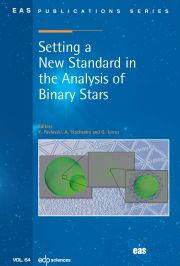Article contents
Magnetic field amplification by SN-driven interstellarturbulence
Published online by Cambridge University Press: 20 January 2011
Abstract
Supernovae are known to be the dominant energy source for driving turbulence in theinterstellar medium. Yet, their effect on magnetic field amplification in spiral galaxiesis still poorly understood. Analytical models based on the uncorrelated-ensemble approachpredicted that any created field will be expelled from the disk before a significantamplification can occur. By means of direct simulations of supernova-driven turbulence, wedemonstrate that this is not the case. Accounting for vertical stratification and galacticdifferential rotation, we find an exponential amplification of the mean field ontimescales of 100 Myr. We highlight the importance of rotation in the generation ofhelicity by showing that a similar mechanism based on Cartesian shear does not lead to asustained amplification of the mean magnetic field.
Information
- Type
- Research Article
- Information
- Copyright
- © EAS, EDP Sciences 2011
References
Références
- 1
- Cited by

